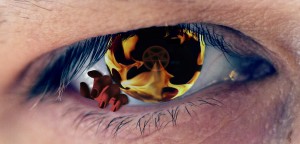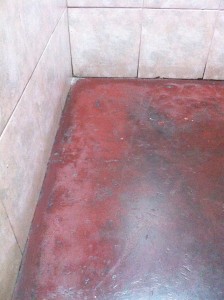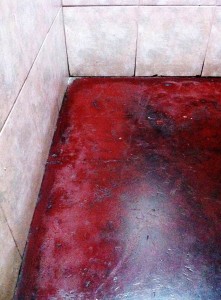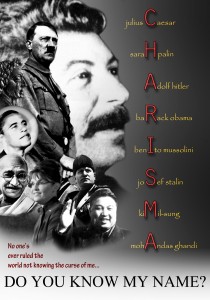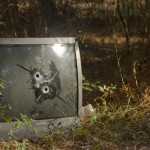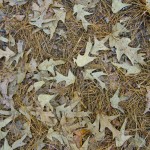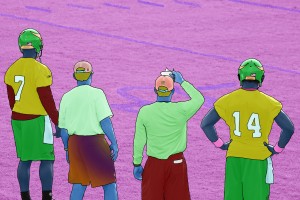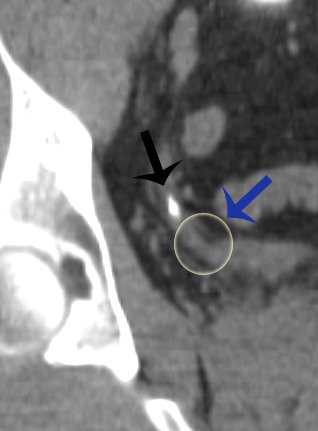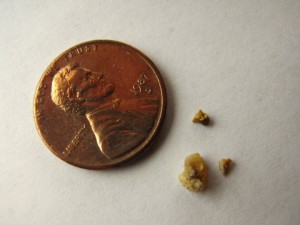I know it’s a corny play on a popular movie title. I just couldn’t leave it alone.
Thursday nights at the Museum of Fine Arts Houston (MFAH) are free to the public courtesy of the Shell Oil Corporation (you know – that big evil oil company). Another good thing about Thursdays is that the museum is open until 9 pm (again, thanks to Shell, evil corporation that it is). My Digital Art professor told me about the Heinrich Kuhn exhibit currently at the museum. Well, thinking that the price of admission (free) was perfect, I thought it would be a nice way for my and my wife to break the monotony of mid-week life. So, off to the MFAH we went.
The first exhibit we visited was the Carlos Cruz-Diez exhibit. For those of you not familiar, Cruz-Diez has spent his life studying color perception and translating that to his art. The exhibit progresses from his early experiments with color in the late 1950’s all the way to his sophisticated physichromies of today. Much of his work is centered around the changing perceptions of color and shape as we move from one point to another. During the progression you can see the increasing sophistication of his work. Along the way we see shapes added. Shimmers are soon added. Then we see shimmering shapes. Then there are light plays as the vertical lines in the piece are not of equal widths throughout. Then there are plays on the orientation of lines. They all add up to amazing effects on a piece as you move from one side to another as you view the work. The MFAH has one of his chromosaturation pieces where individual rooms are bathed in colored light. Each room is a different color, and it’s amazing how the color changes are quite abrupt. It’s hard to imagine how he came to this work, but he definitely challenges the viewer’s individual perceptions on color. I personally have never seen anything quite like it before.
The second exhibit I visited was the Heinrich Kuhn exhibit, entitled, “The Perfect Photograph.” The works on display are (mostly) Kuhn’s work from just before the turn of the century to just after the start of World War I. One thing I found interested was the fact that there were no silver gelatin prints present. All of the prints were made using an “alternative” process. Mostly there were gum bichromates, platinum prints, oil transfers, and combinations thereof. There were a few other processes present, but these aforementioned made up the bulk of the pieces. The thing that really caught my eye were the gum bichromate prints. Some of these prints were, what I would guess, around 2′ x 2.5′. Keep in mind that the gum bichromate process is a contact process. What this means is that the negatives have to be the same size as the final print. How on earth, in the absence of an electric enlarger, make negatives this size?! Unless his camera took negatives this size (which is doubtful given just given the size of the lens necessary to cast that large an image circle), I just can’t figure out how he did it. I did by the book they had on sale in the museum retail shop, but I have yet to crack it open. Hopefully it will reveal his secret. I’ll keep you posted on that.
As for the pictures themselves, they were pretty amazing. The skill shown, especially where gum bichromate is concerned, is definitely that of a master. Some of the pictures on display would definitely look quite ordinary and uninteresting with the cold precision of a modern digital SLR, but the alternative processes give them a life that, at times, seems otherworldly. The roughness of the watercolor paper (modern photographic paper is basically watercolor paper coated with light sensitive silver salts) is counteracted by the soft edges on the subjects themselves. There are landscapes, portraits, nudes, and scenes in the collection. Around the turn of the 20th Century photography was considered by many as a mechanical endeavor. This was also an image that some photographic societies wished to maintain – John Pouncy, the “father” of the gum bichromate process, was sharply criticized by the London Royal Photographic Society for his work because they felt it crossed too much into the world of art for it to be considered a photograph. Kuhn’s work (along with others of his time such as Eduoard Steichen) seems to mark a turning point to where photography started to receive consideration as an artitistic medium.
The final exhibit I visited was the Neoclassical collection. The MFAH currently has on loan some masterpieces of the Neoclassical era from museums all over the world, including the Louvre in Paris. I won’t bore you with the ones that I really liked because many of these are very familiar to us, whether we know them or not. One thing to keep in mind, however, is that nothing compares to seeing a work of art when the actual piece is in front of your eyes. Pictures in a book or a on a computer screen are not the same. Such masterpieces as Oath of the Horatii by Jacque-Louis David and Ernst Matthai’s Venustake on a whole new life. I said I wasn’t going to bore you with my favorite, but this is an obscure piece and it really seemed to strike me. It is by John Flaxman and it is called St. Ethelburga With Her Chaplain, St. Paulinas of Rochester, Bringing Christianity to Northumbria. The piece is done in pen and ink with gray wash. The drawing is of four figures walking from right to left through a forest. The forest itself is gray but the figures walking are pure white outline (the whole piece is outline, but the gray wash adds texture and feeling to the forest). The figures seem to be glowing, as if having come just short of divinity while still in the mortal realm. The piece itself is very haunting (and I would guess it was part of the inspiration for the cover of the Beatles album Abbey Road. Alas, I have yet to find an electronic reproduction anywhere to show you, but I am still searching. Plus, I want a print for myself.
Thus ended an evening at the museum. There are some new exhibits starting soon and I am going to make sure to get down to those. Well, it is officially Sunday morning now and I do need to get some sleep. Have a good night, everyone, and be sure to visit the links below to see some of the things I was talking about. Take care.
Carlos Cruz-Diez Website
Museum of Fine Arts Houston (from here you can get to the three exhibits mentioned above to see some of the key pieces)
